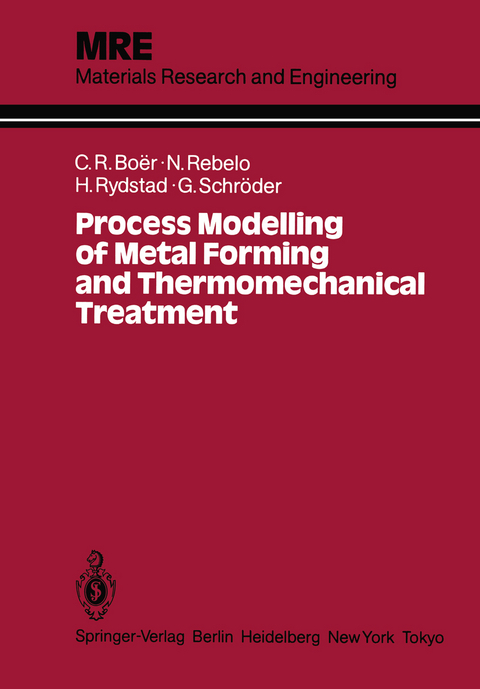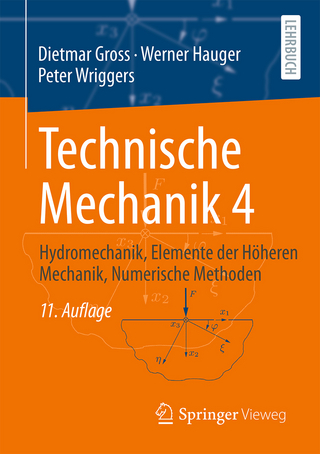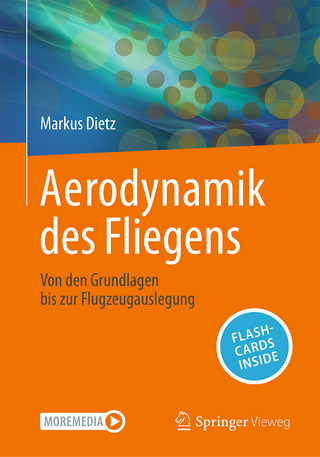
Process Modelling of Metal Forming and Thermomechanical Treatment
Springer Berlin (Verlag)
978-3-642-82790-7 (ISBN)
1 Preface.- 2 Mathematical Modelling.- 2.1 Introduction.- 2.2 Infinitesimal Theory of Plasticity.- 2.3 Problem Solution.- 2.4 Elementary Analysis or "Slab Method".- 2.5 Upper-Bound Method.- 2.6 Finite Element Analysis.- References Chapter 2.- 3 Physical Modelling.- 3.1 Similarity Theory.- 3.2 Application and Basic Techniques.- 3.3 Material Flow in Forging - Examples.- 3.4 Simulation of Material Deformation in Turbine Blade Forging.- 3.5 Conclusions.- References Chapter 3.- 4 Modelling of Forging.- 4.1 Introduction.- 4.2 System Modelling in Hot Die Upsetting.- 4.3 Plane Strain Modelling of Closed Die Forging.- 4.4 Plan Strain Modelling of Thin Rib Forging.- 4.5 Finite Element Analysis of a Complex Axisymmetric Shape.- References Chapter 4.- 5 Modelling of Rolling.- 5.1 Introduction.- 5.2 Measurements of Lateral Spread.- 5.3 Computer-Aided Roll Pass Design.- 5.4 Results.- 5.5 CAD/CAM in Steel Profile Production.- References Chapter 5.- 6 Modelling of Drawing.- 6.1 Introduction.- 6.2 Upper-Bound Analysis of Round-To-Square Drawing.- 6.3 Finite Element Analysis of Bar Drawing.- References Chapter 6.- 7 Modelling of Thermomechanical Treatment.- 7.1 Introduction.- 7.2 Determination of Heat Transfer Coefficients in Quenching.- 7.3 Quenching of Steel Plate through Water Flushing.- 7.4 Modelling of Quenching of Complex Parts.- 7.5 Modelling of Heat Treatment of Large Forgings.- References Chapter 7.- 8 Outlook.
| Erscheint lt. Verlag | 15.12.2011 |
|---|---|
| Reihe/Serie | Materials Research and Engineering |
| Zusatzinfo | XVI, 412 p. |
| Verlagsort | Berlin |
| Sprache | englisch |
| Maße | 170 x 244 mm |
| Gewicht | 740 g |
| Themenwelt | Naturwissenschaften ► Physik / Astronomie ► Mechanik |
| Technik ► Maschinenbau | |
| Schlagworte | Deformation • Efficiency • Engineering Materials • Environment • Mechanics • Mechanism • metals • Modeling • Modelling • numerical method • plastic deformation • Plasticity • Product Development • quality • Simulation |
| ISBN-10 | 3-642-82790-X / 364282790X |
| ISBN-13 | 978-3-642-82790-7 / 9783642827907 |
| Zustand | Neuware |
| Informationen gemäß Produktsicherheitsverordnung (GPSR) | |
| Haben Sie eine Frage zum Produkt? |
aus dem Bereich


